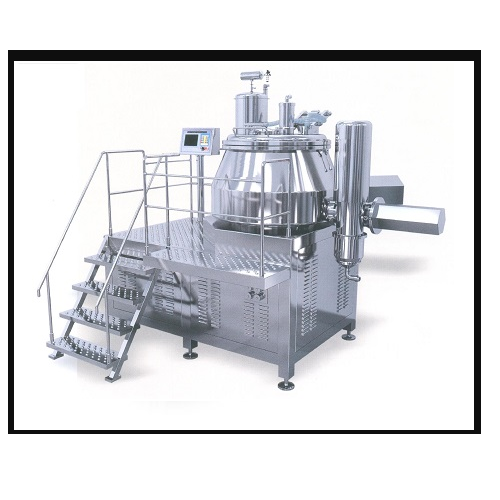What kind of Milling Machine do you need?
Before we get into the detail of which milling machine configuration you’ll most likely want to buy, it’s important to note that this article will only cover manual milling machines. CNC mills are a different beast altogether, and they’ll have their own handbook.
Although manual and CNC mills have a lot in common (manual mills are frequently converted CNC mills), CNC mills have extra needs that would make this article too complicated. In this piece, we’ll only discuss manual machines.
Horizontal and vertical milling machines are the two most common types of modern milling machines. This controls whether the spindle axis of the machine moves up and down or side to side. Both sorts of machines will frequently feature tilting or swiveling heads, columns, and tables, allowing them to do many of the same functions. Certain tasks, however, will be easier on one system than on the other.
In actuality, the differences between the machines are more obvious than their orientation. The table on a vertical machine will be perpendicular to the spindle’s zero-tilt position, whereas the spindle on a horizontal machine will be parallel to the table’s plane. This introduces a fundamental distinction in the types of jobs that each machine can handle.
The overarm, which constrains the revolving arbor on two sides, is the major strength of a horizontal milling machine. This provides it enormous strength and allows the machinist to make extremely heavy cuts that a vertical machine would be unable to handle.
Because of the tremendous strength, it’s perfectly possible (and popular) to stack many cutters on the arbor to cut a flat table with slots in a single pass. This makes it ideal for surface, cutting grooves and slots, and other operations requiring a flat part in one axis.
The disadvantage is that making pieces with cuts in all axes is substantially more difficult (and often impossible). A vertical milling machine excels in this area: flexibility. You’d be hard-pressed to find a job that a vertical mill can’t handle — though, depending on the part geometry, it can take a lot longer than a horizontal mill.
You probably already know which one you want now that you know the differences. But, just in case, we’ll remark that a vertical mill is nearly probably what you’re looking for. Horizontal mills are useful for a limited number of tasks, but most hobbyists won’t use them very often.
In contrast to the specialized production work that horizontal mills are typically used for, the versatility of a vertical mill lends itself nicely to the many and diversified activities that hobbyists incline toward.
Should You Buy Brand Name
This is a question that influences many purchase decisions, including milling machines. So, does it make a difference? Both yes and no. Milling machines have been around for a long time, and there are no mysteries to their design. What makes a good machine and what doesn’t is well-known.
Unfortunately, reality does not live up to that expectation. This is due to two factors: manufacturing quality and cost. Many manufacturers will cut corners in order to keep costs down. They might employ low-quality materials, motors that aren’t powerful enough, and so on. Even if the manufacturer isn’t cutting corners on purpose, it’s possible that they’re simply incapable of producing high-quality products. Poorly manufactured lead screws, sloppy machining, and sloppy tolerances can all result in a mill that is difficult to use and can’t maintain acceptable precision.
As a result, purchasing a proven machine is a good option. Choosing a well-known brand is usually the best option. However, some less expensive brands continue to manufacture high-quality machines (often clones of more expensive models). They may have fewer features or less powerful motors, yet they may be sufficient for your requirements. Just make sure to read some evaluations from people who have worked with them in the past.
Size Matters
Small desktop milling machines are appealing, but if you plan to mill metal, you should avoid them. Consider the last time you had to drill a hole in steel or use a hacksaw to cut a piece off. It’s an extremely difficult task that necessitates a great deal of force. Your milling machine must be able to apply that much force without flexing – even a small amount of flex will ruin any hope of machining a part with acceptable tolerances.
As a result, the mill’s frame should be as hefty and robust as feasible. A small desktop machine will very probably be incapable of milling anything tougher than aluminum, and even then, the results will be inconsistent. If you want even reasonable precision, the best option is to acquire a mill that is as huge and heavy as your space allows.
Spindle Motor HorsePower
Machinists, like car aficionados, place a premium on horsepower. This isn’t entirely unjustified; the last thing you want is for the motor to stall in the middle of a cut. However, almost all mills will feature a mechanism to gear down the motor in order to boost torque at the expense of speed. Steel milling necessitates high torque and low speed, whereas aluminum milling necessitates the opposite.
New or Used?
Buying used is something you should really consider. Quality mills are long-lasting devices that can withstand a lot of usage for decades, and buying used can save you a lot of money. Industrial auctions in your area and Craigslist are both fantastic locations to look at. Evaluating old machinery is similar to inspecting a used car: make sure everything works, that there isn’t excessive wear, and that it appears to have been well-maintained.
So above are the tips you can follow in buying the Milling Machine for your application. Promas Engineers is the best Milling Machine supplier and manufacturer in India. For more information on milling machines, contact us.




